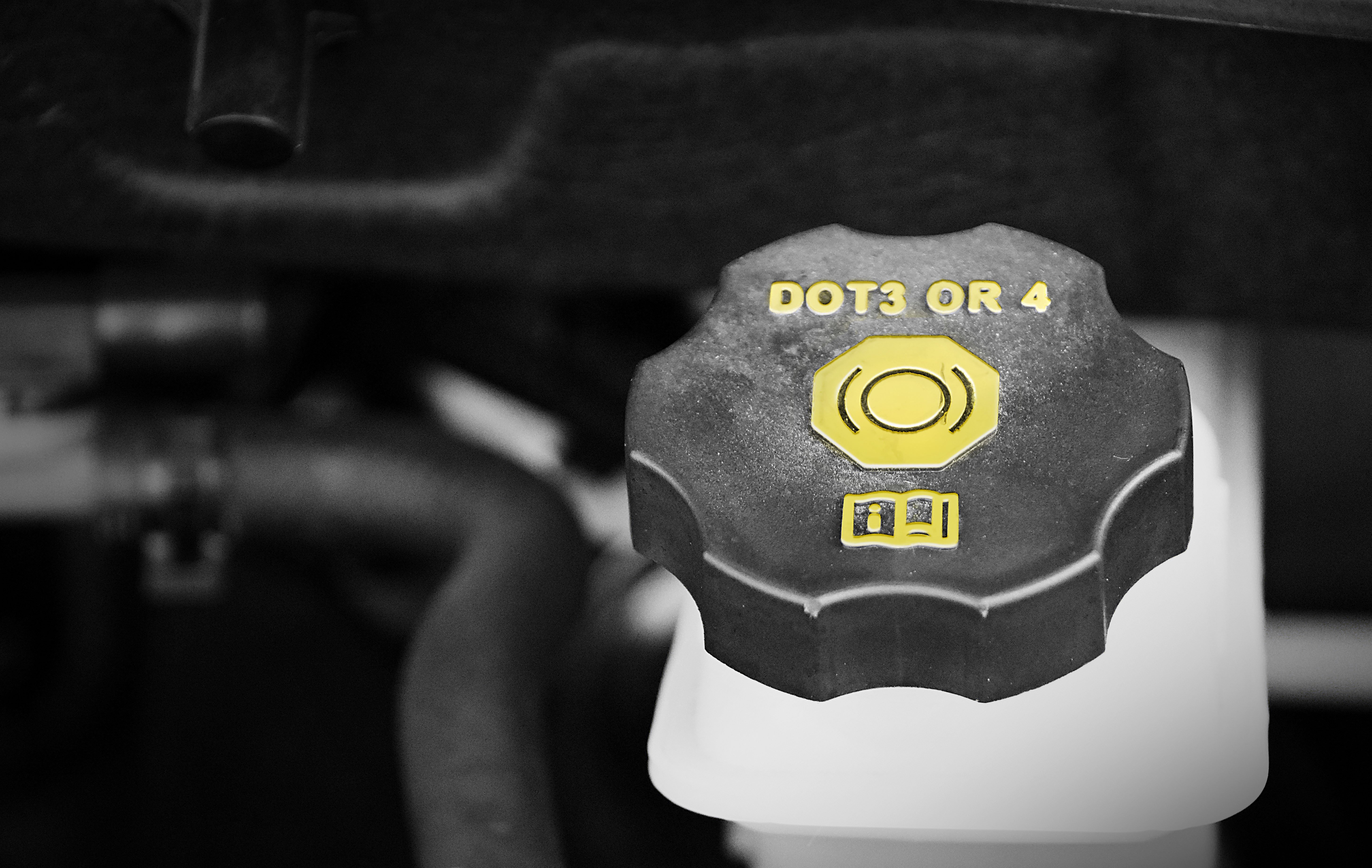
Most automobile owners regularly maintain their vehicle by changing engine oil or transmission fluid, but often times overlook the importance of changing the brake fluid as scheduled.
Brake fluid is used to transfer mechanical power at the brake pedal to hydraulic power at the disk or drum brakes. While brakes are designed to be a closed system, they are not always completely sealed. Combine that with brake fluid being hygroscopic in nature, meaning it absorbs water from the atmosphere, over time brake fluid will become contaminated with water. Water boils at a much lower temperature than fresh brake fluid, so fluid close to the caliper or drum will begin to boil. The result from the increased temperature of the fluid is a ‘soft pedal’. When overheating is severe enough, the driver needs to ‘pump the brakes’ to get the pedal to respond at all!
There are two common brake fluid options for passenger
cars and other light duty vehicles: DOT 3 and DOT 4. The primary difference in
these specifications is the minimum Wet and Dry boiling points as set by the
U.S Department of Transportation (DOT). Wet Boiling Point is measured when the
fluid has 3.7% water by content. Dry Boiling Point is measured when the fluid
has 0% water by content.
The minimum requirement to meet the FFVSS116 standard,
set by the US Government, is as follows:
DOT 3 Minimum Wet Boiling Point: 284°F (140°C)
DOT 4 Minimum Wet Boiling Point: 311°F (155°C)
In looking at these minimum requirements you can see the
DOT 4 will resist boiling at a higher temperature even when contaminated with
water. This gives you an extra amount of safety, and is sometimes required by
vehicle manufacturers when you are taking your vehicle to a race track or are hauling
heavy loads and need maximum performance from your brakes.
MAG 1 DOT 3 and DOT 4 brake fluids are compatible with
each other, but if you decide to upgrade from a DOT 3 fluid to DOT 4 fluid, it
is important to completely flush the brake fluid system to ensure maximum
performance.
